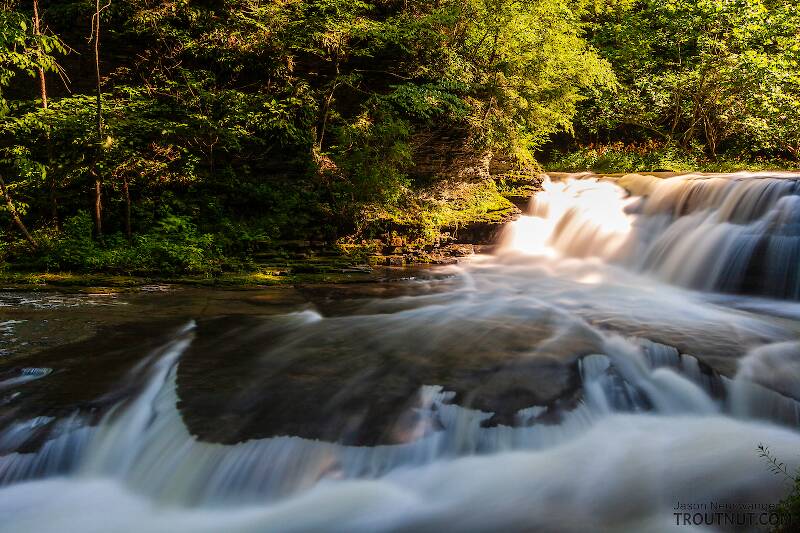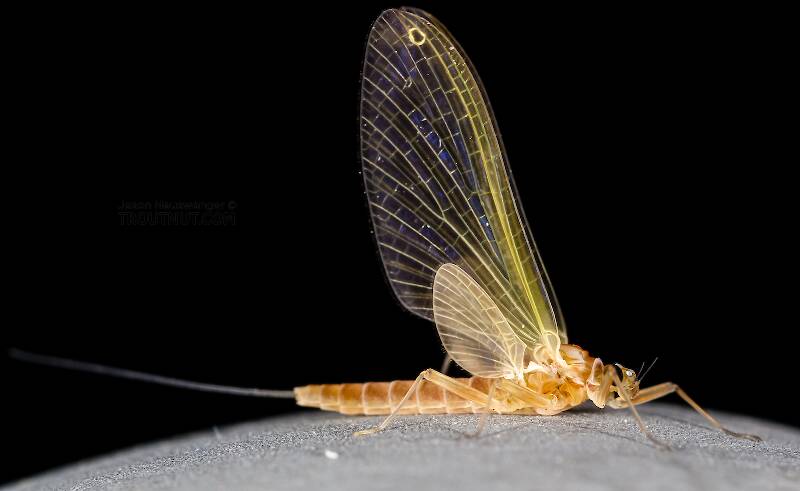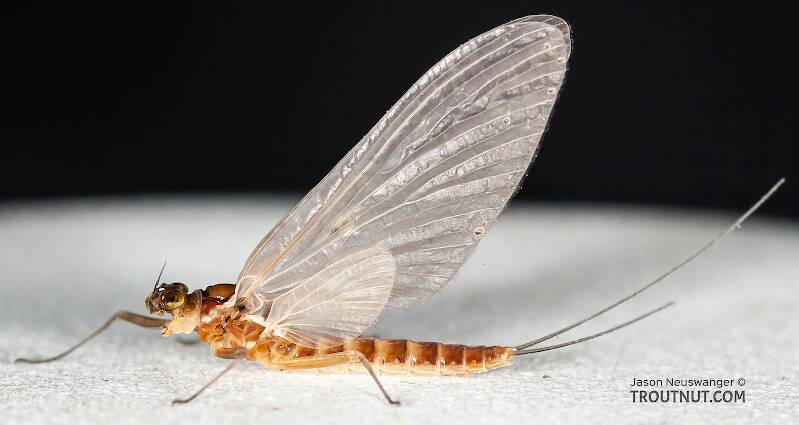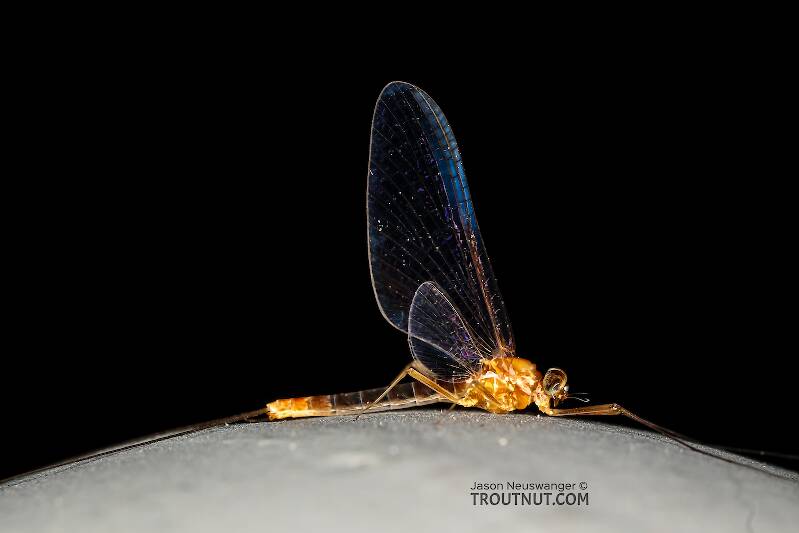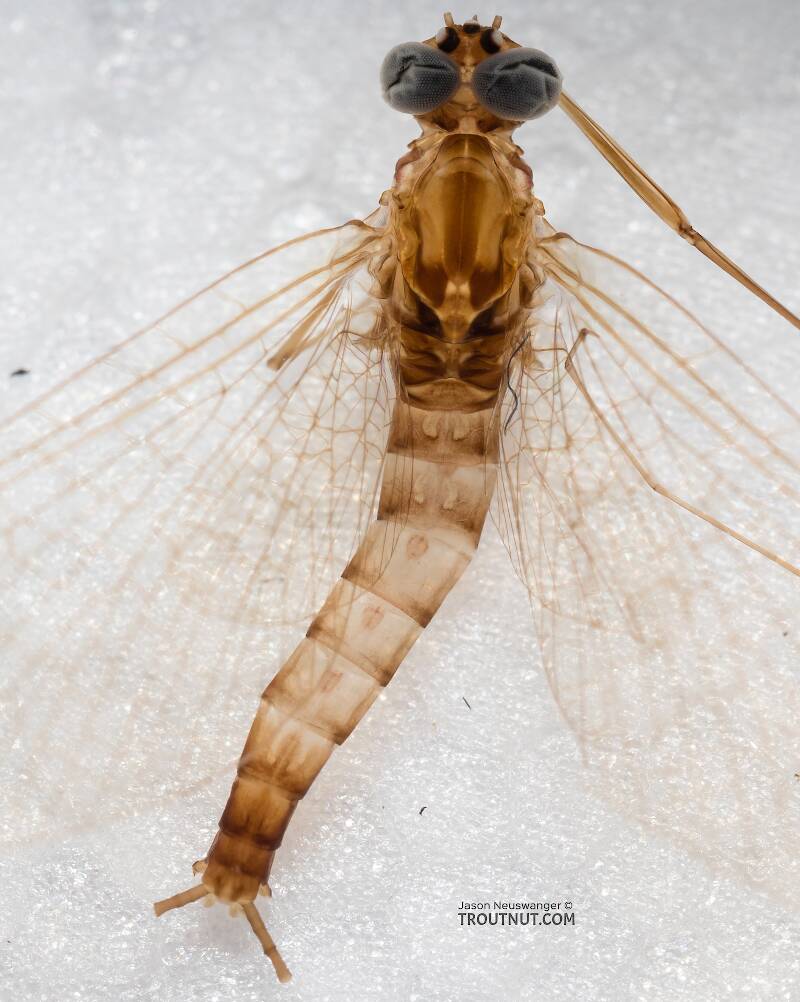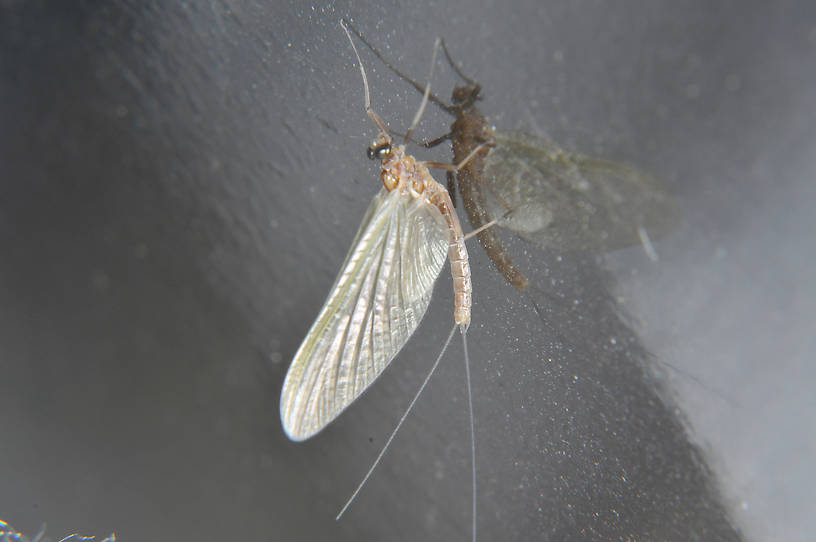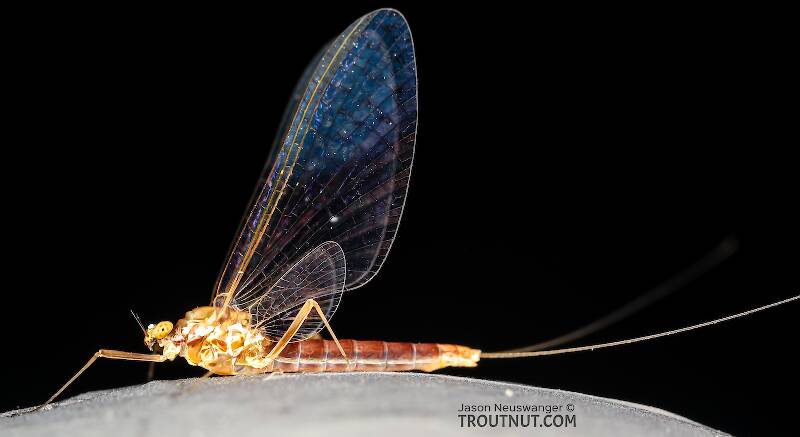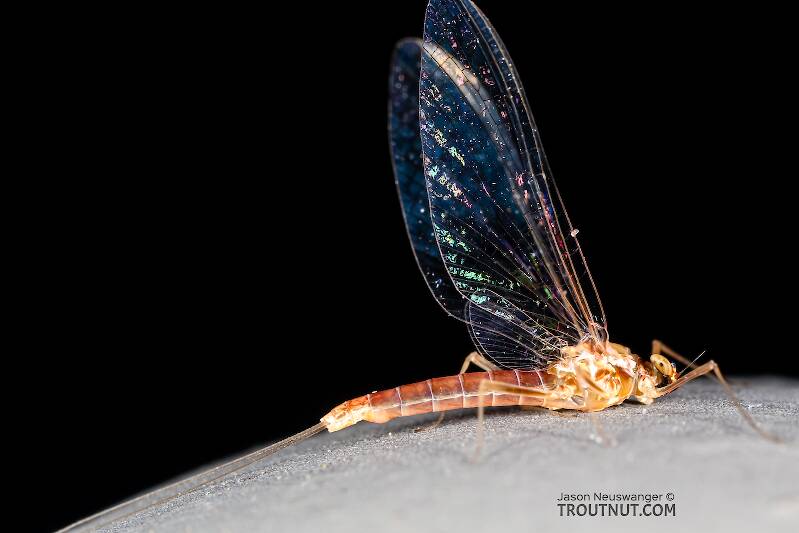
Hex Mayflies
Hexagenia limbata
The famous nocturnal Hex hatch of the Midwest (and a few other lucky locations) stirs to the surface mythically large brown trout that only touch streamers for the rest of the year.
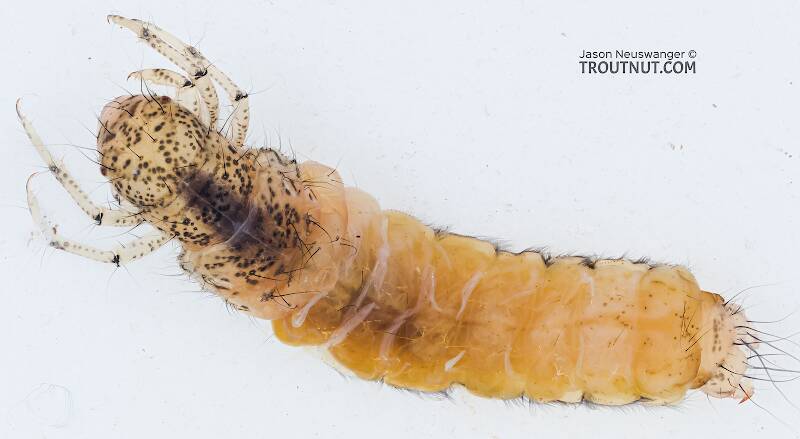
- The prosternal horn is present.
- The mandible is clearly toothed, not formed into a uniform scraper blade.
- The seems to be only 2 major setae on the ventral edge of the hind femur.
- Chloride epithelia seem to be absent from the dorsal side of any abdominal segments.
Based on these characteristics and the ones more easily visible from the pictures, this seems to be Grammotaulius. The key's description of the case is spot-on: "Case cylindrical, made of longitudinally arranged sedge or similar leaves," as is the description of the markings on the head, "Dorsum of head light brownish yellow with numerous discrete, small, dark spots." The spot pattern on the head is a very good match to figure 19.312 of Merritt R.W., Cummins, K.W., and Berg, M.B. (2019). The species ID is based on Grammotaulius betteni being the only species of this genus known in Washington state.

Mayfly Species Cinygmula ramaleyi (Small Western Gordon Quills)
Where & when
Cinygmula ramaleyi is widely distributed in the West.This species appears to be common in interior Alaska, where it emerges during the latter half of the summer. Fishable hatches and selective grayling are possible on a couple of cold, productive spring creeks in the area.
In 10 records from GBIF, adults of this species have been collected during September (30%), August (30%), June (20%), October (10%), and July (10%).
In 9 records from GBIF, this species has been collected at elevations ranging from 2702 to 10492 ft, with an average (median) of 9760 ft.
Species Range
Hatching behavior
Emergence in interior Alaska differs from that described for other locales; I have observed them emerging on a spring creek beginning in July and extending through September. It seems to pick up as the larger Drunella doddsii hatch tapers off, both in terms of season and time of day. Although they are reported as a late morning hatch in angling literature, I have most often observed them in the afternoon or early evening in Alaska. The duns emerge in classic sailboat fashion and take some time to get off the water.Spinner behavior
Time of day: Midday
Habitat: Riffles
Nymph biology
Current speed: Medium to fast
Substrate: Gravel or rocks
Physical description
Most physical descriptions on Troutnut are direct or slightly edited quotes from the original scientific sources describing or updating the species, although there may be errors in copying them to this website. Such descriptions aren't always definitive, because species often turn out to be more variable than the original describers observed. In some cases, only a single specimen was described! However, they are useful starting points.
Male Spinner
Wing length: 10 mm
A medium-sized species with amber-tinged wings; spines on inner margin of penes only.
Head purplish brown. Thorax rather bright red-brown; mesonotum yellowish brown, median stripe darker red-brown. Postero-lateral areas of mesonotum on each side of and posterior to scutellum, and lateral areas of metanotum, purplish brown. Narrow purplish markings above leg bases. Median area of mesosternum darker than pleura. Legs reddish brown; fore leg tinged with smoky. All femora with distinct reddish tinge; apex of fore tibia blackish; femora-tibial joinings purplish brown, tarsal joinings narrowly dark brown, on all legs. Wings hyaline, distinctly amber tinged throughout. Veins rather fine, reddish brown.
Abdominal segments 2-7 and basal portion of 8, semi-hyaline; hyaline areas of tergites light red-brown, the posterior half or two-thirds of each purplish brown. Tergite 2 almost wholly dark except for narrow hyaline anterior margin; 2/3 of tergite 3, and about 1/2 of tergites 4-7, dark-shaded, the dark color often concentrated in postero-lateral areas. Pale submedian streaks outlined in darker color are faintly indicated on basal tergites. Sternites greyish with tinge of pale brown; no distinct darker median markings on 2-6. Segments 9 and 10, and apical portion of 8, opaque; tergites red-brown, sternites paler. Ganglionic areas of sternites 7-9 opaque, pale red-brown. Forceps deep olive or smoky brown; penes light red-brown; a curved spine on inner margin of each side of penes (see fig. 103). Tails deep smoky brown.
Specimens of the Mayfly Species Cinygmula ramaleyi
1 Male Dun
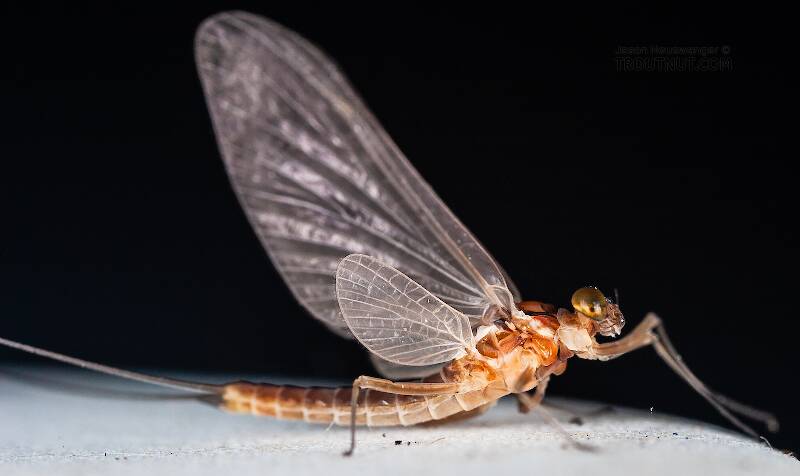
2 Female Duns
3 Male Spinners
2 Female Spinners
1 Nymph
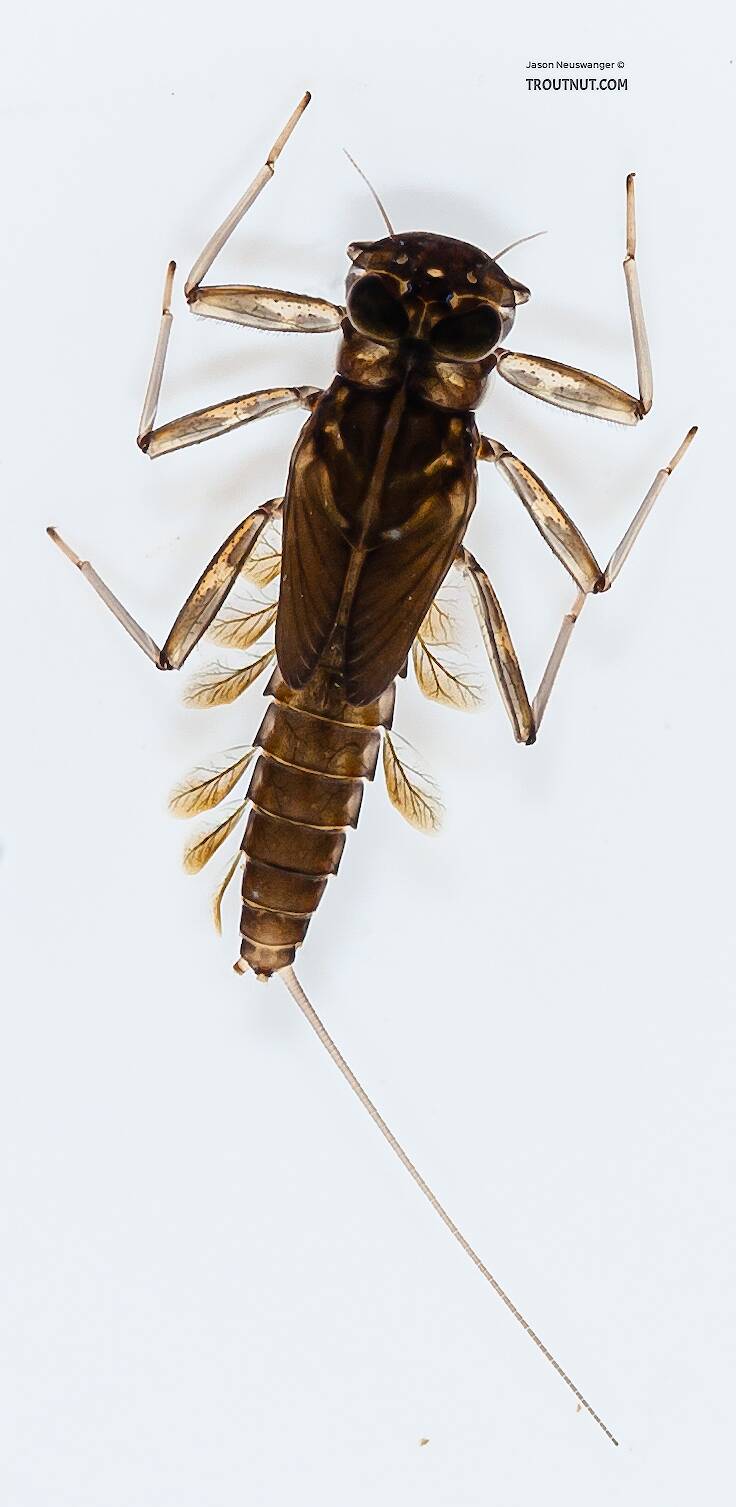
Start a Discussion of Cinygmula ramaleyi
References
- Arbona, Fred Jr. 1989. Mayflies, the Angler, and the Trout. Nick Lyons Books.
- Caucci, Al and Nastasi, Bob. 2004. Hatches II. The Lyons Press.
- Knopp, Malcolm and Robert Cormier. 1997. Mayflies: An Angler's Study of Trout Water Ephemeroptera . The Lyons Press.
- Merritt R.W., Cummins, K.W., and Berg, M.B. 2019. An Introduction to the Aquatic Insects of North America (Fifth Edition). Kendall/Hunt Publishing Company.
- Needham, James G., Jay R. Traver, and Yin-Chi Hsu. 1935. The Biology of Mayflies. Comstock Publishing Company, Inc.
- Schwiebert, Ernest G. 1955. Matching the Hatch. MacMillan Publishing Company.
Mayfly Species Cinygmula ramaleyi (Small Western Gordon Quills)
Species Range
Common Names
Resources
- NatureServe
- Integrated Taxonomic Information System
- Global Biodiversity Information Facility
- Described by Dodds (1923)

